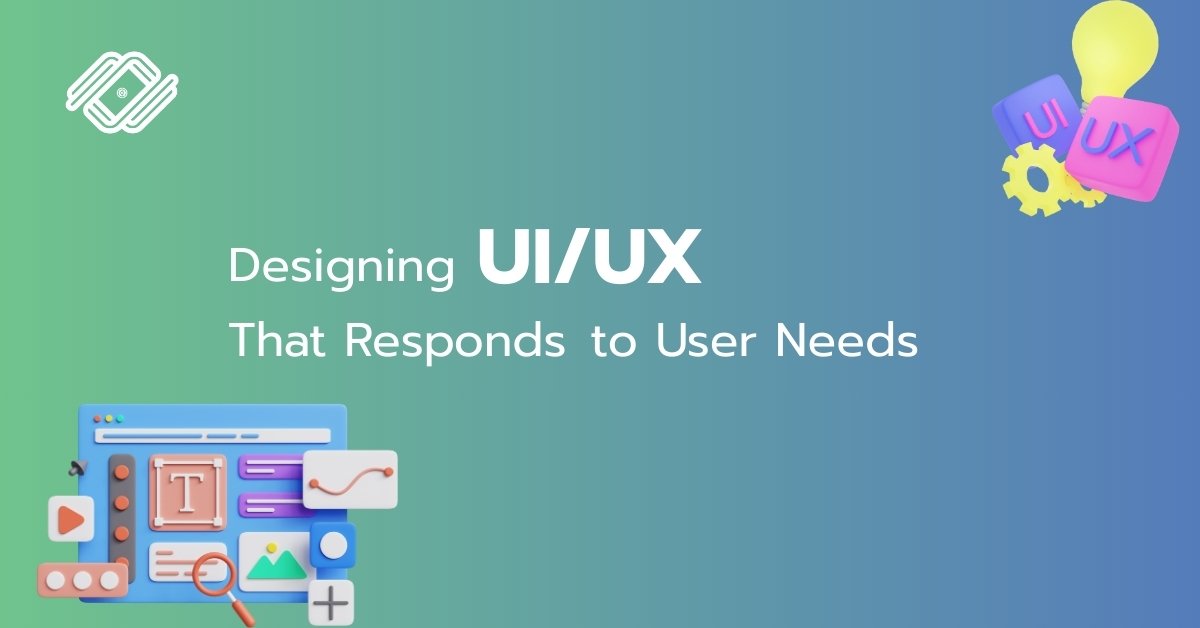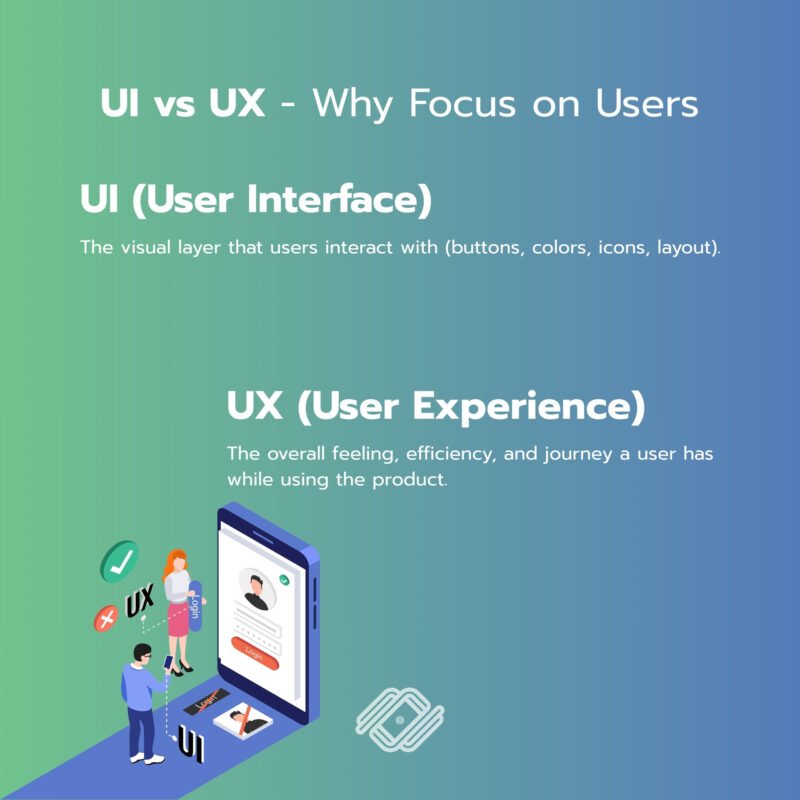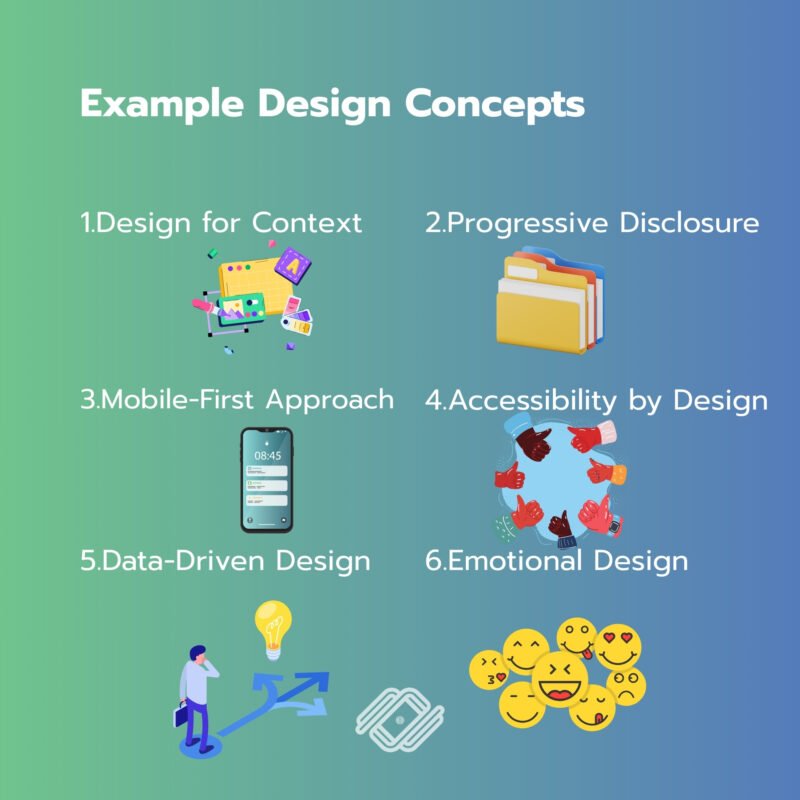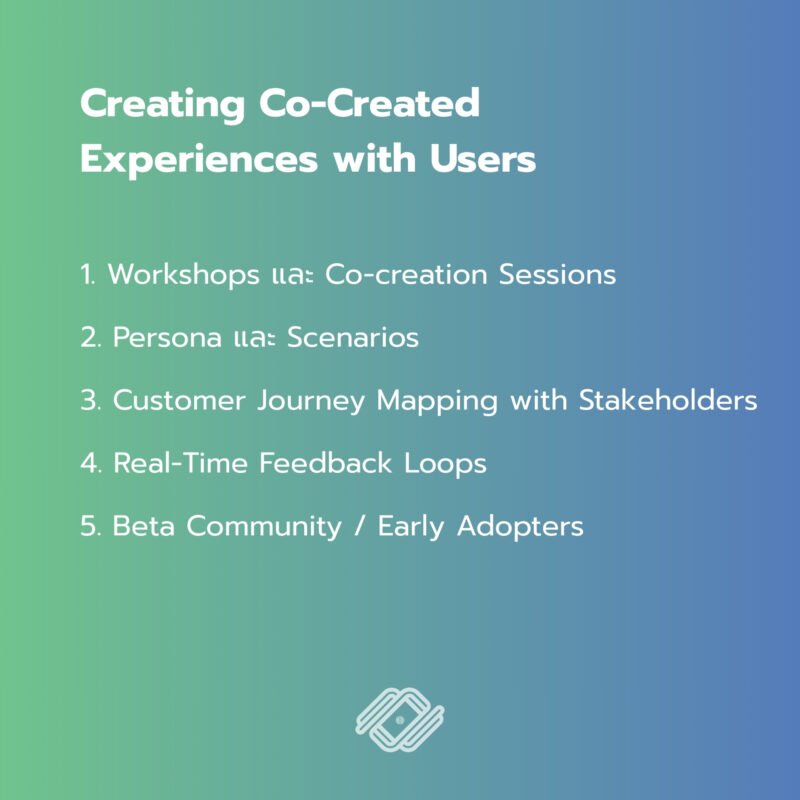
Good UI/UX design is not only about aesthetics—it’s about creating interfaces and experiences that align with users’ needs, behaviors, and expectations. The result is a product that is functional, intuitive, and valuable for both users and businesses. This article covers design concepts, co-created experiences with users, and real user testing.
Introduction: UI vs UX — Why Focus on Users
- UI (User Interface): The visual layer that users interact with (buttons, colors, icons, layout).
- UX (User Experience): The overall feeling, efficiency, and journey a user has while using the product.
Goal: Design to solve real user problems, not just to follow trends.

Example Design Concepts

- Design for Context
- Consider when and where users interact: mobile on-the-go vs desktop at work.
- Adapt UI to match internet speed, screen size, and use cases.
- Progressive Disclosure
- Show essential information first, then let users expand for details.
- Helps reduce complexity and confusion.
- Mobile-First Approach
- Start designing from mobile constraints, then scale up to larger screens.
- Ensures the most important features are prioritized.
- Accessibility by Design
- Provide sufficient color contrast, readable fonts, and navigation for screen readers or keyboards.
- Data-Driven Design
- Use analytics (heatmaps, funnels, click-tracking) to identify user behaviors and optimize UI.
- Emotional Design
- Use visuals, icons, micro-interactions, and tone of voice to create emotional connection and delight.
Creating Co-Created Experiences with Users

Involving users early ensures solutions meet real needs.
- Workshops and Co-Creation Sessions
- Invite real users to brainstorm, build wireframes, or map journeys.
- Benefits: realistic ideas and perspectives the team may overlook.
- User Personas and Scenarios
- Base personas on interviews and data, not assumptions.
- Create realistic scenarios (e.g., “On Saturday morning, A wants to…”) to guide design.
- Customer Journey Mapping with Stakeholders
- Map experiences with users and other teams (support, marketing, dev) to uncover pain points and opportunities.
- Real-Time Feedback Loops
- Add easy ways for users to share input (feedback widgets, in-app surveys).
- Show users that their suggestions are implemented (transparency).
- Beta Community / Early Adopters
- Build a testing community to provide feedback before official launch.
Real User Testing — Process and Techniques
Testing is central to UX—it uncovers issues designs don’t predict.
- Set Clear Objectives
– Example: test understanding of onboarding flow vs measure checkout time.
- Choose Appropriate Methods
– Usability Testing (Lab/Remote): Observe users completing tasks.
– A/B Testing: Compare two UI versions to measure performance.
– Hallway Testing: Let internal team members test quickly.
– Guerrilla Testing: Short tests with strangers in casual settings.
– Card Sorting: Evaluate content organization.
– Tree Testing: Measure ease of navigation through a structure.
- Design Realistic Tasks
– Example: “Find the return policy and complete a return request.”
- Collect Qualitative and Quantitative Data
– Qualitative: comments, body language, user feedback.
– Quantitative: task time, success rate, error rate.
- Analyze and Prioritize Issues
– Classify into urgent, next iteration, or long-term ideas.
– Use severity ratings (1–5) for prioritization.
- Iterate and Retest
– Repeat testing after making improvements.
Case Examples (Brief)
- E-commerce Checkout Simplification: Usability testing revealed confusion with multi-step checkout. The team moved to a one-page checkout, reducing cart abandonment.
- Banking App Onboarding: New users abandoned due to long forms. The team reduced fields and added a progress indicator, increasing registration completion rates.
Best Practices to Follow
- Always start with real users, not team preferences.
- Prioritize simplicity over novelty.
- Incorporate accessibility and inclusive design.
- Use data and research, not assumptions, for decision-making.
- Test frequently—once is not enough.
Conclusion
Designing UI/UX that responds to user needs is about combining thoughtful design concepts, user participation, and continuous testing. When teams center design around users, the result goes beyond beautiful interfaces—it creates truly usable, effective products that lead to satisfied users and successful businesses.
—–
If you want your business to reach online customers and achieve sustainable marketing results, we are happy to provide consultation on what you need.
For further inquiries, contact us at:
Tel. 093 696 4498 Line OA: https://lin.ee/po8XduU
E-mail: mongkontep@pkindev.com
Inverze Solutions Co., Ltd. has received numerous awards for its achievements
